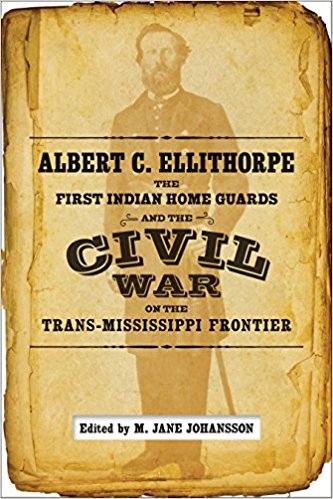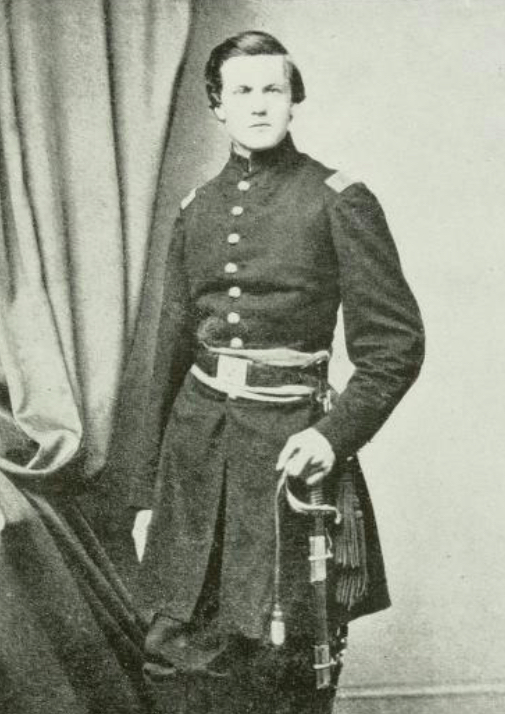Albert C. Ellithorpe, The First Indian Home Guards, and the Civil War on the Trans-Mississippi Frontier edited by M. Jane Johansson. Louisiana State University Press, 2016. Cloth, ISBN: 978-0807163580. $45.00.
 Recent years have witnessed a resurgence of Civil War scholarship that focuses on events in the Western and Trans-Mississippi Theaters. Historians have also begun to reimagine Civil War era events as part of a larger narrative in American westward expansion. This development has increasingly led some historians to incorporate the term “Far West” into their scholarship. Indeed, the December 2016 issue of The Journal of the Civil War Era focused on interpreting Civil War and Reconstruction developments, particularly those west of the Mississippi River, as part of a larger storyline of American nation-building.
Recent years have witnessed a resurgence of Civil War scholarship that focuses on events in the Western and Trans-Mississippi Theaters. Historians have also begun to reimagine Civil War era events as part of a larger narrative in American westward expansion. This development has increasingly led some historians to incorporate the term “Far West” into their scholarship. Indeed, the December 2016 issue of The Journal of the Civil War Era focused on interpreting Civil War and Reconstruction developments, particularly those west of the Mississippi River, as part of a larger storyline of American nation-building.
M. Jane Johansson’s Albert C. Ellithorpe: The Indian Home Guards and the Civil War on the Trans-Mississippi Frontier thus makes a timely and important contribution to the renewed study of the conflict west of the great river. Ellithorpe served as a commissioned officer in the First Indian Home Guards, a unit composed of white officers, Seminole and Creek Indian soldiers, and African American (black Seminole and Creek) soldiers that fought principally in Arkansas and Indian Territory. Johansson includes an excellent biographical sketch of Ellithorpe and explains how the inventor and Chicago businessman joined the Union war effort—and how he became involved with what she identifies as a “tri-racial” unit. A supporter of Republican Abraham Lincoln in the presidential election of 1860, Ellithorpe was an outspoken critic of slavery who identified the peculiar institution as the fundamental cause of the conflict during the earliest days of the war. Interestingly, however, his political views did not initially lead him to service with the mixed-race unit. Rather, he initially sought a commission with what became the Thirteenth Illinois Cavalry.
Johansson weaves together selections from Ellithorpe’s journal, correspondence, and articles authored by the officer for the Chicago Evening Journal. Through a chronological arrangement, the book includes chapters on Ellithorpe’s life before and after the war, tumult within the regiment, and specific battles and campaigns. Military historians will find particular value in the chapters that chronicle the Indian Expedition (1862) and the Prairie Grove Campaign (1862). In addition to predictable selections that describe rivalries between officers, the writings provide valuable commentary on refugees and guerilla warfare. Ellithorpe reveals the precarious existence led by many residents of Arkansas and Indian Territory while both belligerents failed to control the countryside. As the officer wrote in May 1863, “The rebel portion of the population are jubilant, and avail themselves of every opportunity to wreak vengeance upon the Union people, who will have to leave or lose their lives.” Whether Ellithorpe sympathized with civilian refugees typically depended upon the loyalty of those in question. By at least the midpoint of the war, Ellithorpe concluded that the federal policy of conciliation and leniency toward the white southern civilian population had failed. Instead, he advocated swift action against partisan groups, including the execution of prisoners. Ellithorpe eventually considered himself a counterinsurgent and here, he offered particular praise for his Native American troops.
Considering the detail with which Ellithorpe described certain activities and issues, it is perhaps surprising that he said so little on other topics. For example, as Johansson points out, although the officer routinely praised and defended his soldiers collectively, he wrote very little about his relationships with the men and offered no real insight into his views on race, beyond basic nineteenth-century paternalistic views and his public condemnation of slavery. Scholars can read between the lines of certain commentary, such as Ellithorpe’s tendency to compliment Indians he considered most civilized by deeming them comparable to white men. The reader learns little about Ellithorpe’s motivation for joining the unit beyond his exclusion from the white unit that he had helped recruit. Here again, one might surmise from Johansson’s excellent analysis that, to a degree at least, the officer simply considered the assignment an excellent opportunity to advance his public standing.
Ellithorpe was an officer and a prominent individual before and after the war. As such, his words do not afford a voice to the common soldier, but his journal entries, correspondence, and newspaper articles written from the frontlines of the Trans-Mississippi Theater certainly deliver valuable insights into multiple aspects of the war. In particular, Ellithorpe’s collected writings provide the most detailed account of an Indian home guard unit available. Overall, Johansson’s fine book is an excellent source for scholars interested in guerilla warfare, mixed-race units, federal military policy toward southern civilians, and the Trans-Mississippi Theater in general.
Bradley R. Clampitt is Associate Professor and Chair of the Department of History and Native American Studies at East Central University.
